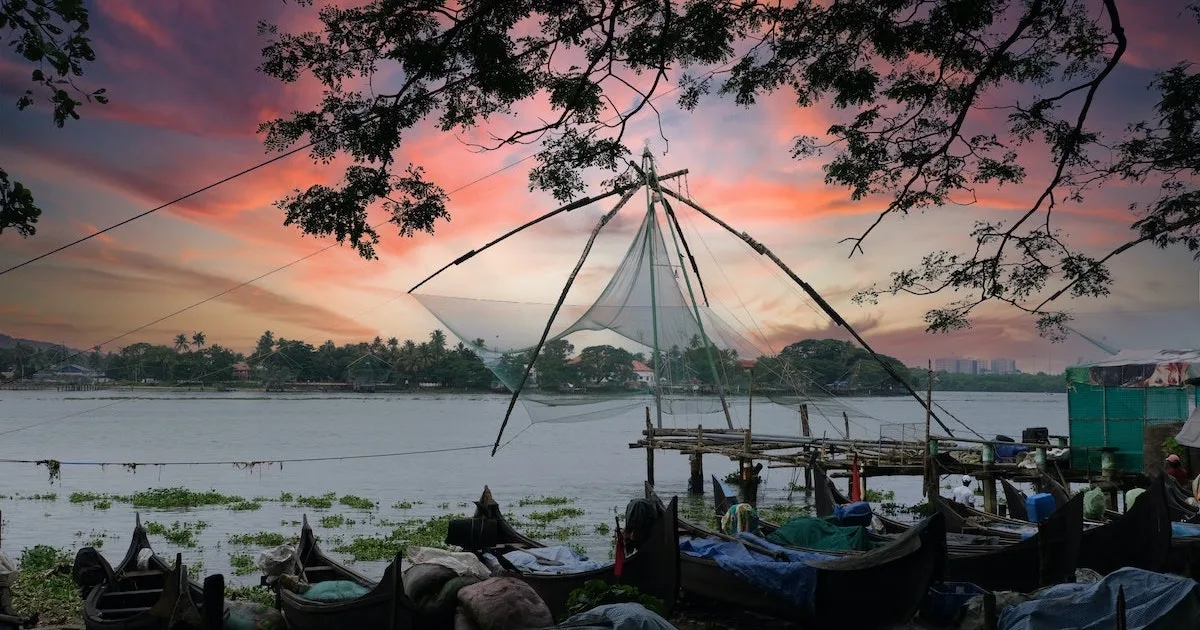If you’re planning your Kochi itinerary, you’re in the right place.
This historic port city is one of the most iconic destinations in Kerala, India’s southernmost state. However, it requires some careful forethought to explore.
Kochi (formerly known as Cochin) is where I started my two-week-long Kerala trip.
It’s also where I spent most of my time in Kerala. This is the city where I had my first Ayurvedic treatment and my first Sadya (a traditional Kerala meal).
You may have seen photos of Kochi’s Chinese fishing nets glinting in the sun or perhaps heard of the city’s many churches, temples, Ayurveda spas and restaurants serving delicious local seafood.
It’s easy enough to include all of this, and more, in your Kochi itinerary. I’ll discuss the best places to visit and things to do in Kochi, as well as where to stay and other tips about exploring the city.
Planning your Cochin itinerary is just one piece of a bigger puzzle — if you’re travelling elsewhere in the state, you may want to use my detailed Kerala itinerary to plan your full trip.
Disclosure: This post includes affiliate links. If you decide to click through and make a qualifying purchase, I will receive a small commission at no extra cost to you – thanks for your support.
I created this post following a sponsored trip hosted by Kerala Tourism. They covered my hotel and travel costs and gave me many helpful pointers. I then continued my Kerala trip solo – all of the advice in this post is my own, so I hope you find it useful!
QUICK INFORMATION
Best time to visit: September to March
Time needed: 1 – 3 days
Must-do experiences in Kochi…
2. Houseboat cruise (overnight from Kochi) 🌊
Where is Kochi?
Kochi is a city in central Kerala. It is located on the southwest coast of India.
The city’s port has been operating since 1341, trading spices and other valuable resources with Arab and European countries, as well as China.
The city is only an hour and a half’s drive north of Alleppey (Alappuzha), an area famous for its backwaters and houseboat cruises.
Kochi is also a three- to four-hour drive from Munnar, an area rich in tea plantations and hiking trails.
It’s also a nice launchpad for reaching Thekkady, where you can visit the Periyar Tiger Reserve to go wildlife-watching and camping.
Is Kochi Worth Visiting?
There are so many things to do in Kochi.
However, the main highlight of any Kochi itinerary is visiting Fort Kochi, a historic area with Dutch, Portuguese and British colonial architecture. It features the city’s iconic Chinese fishing nets.
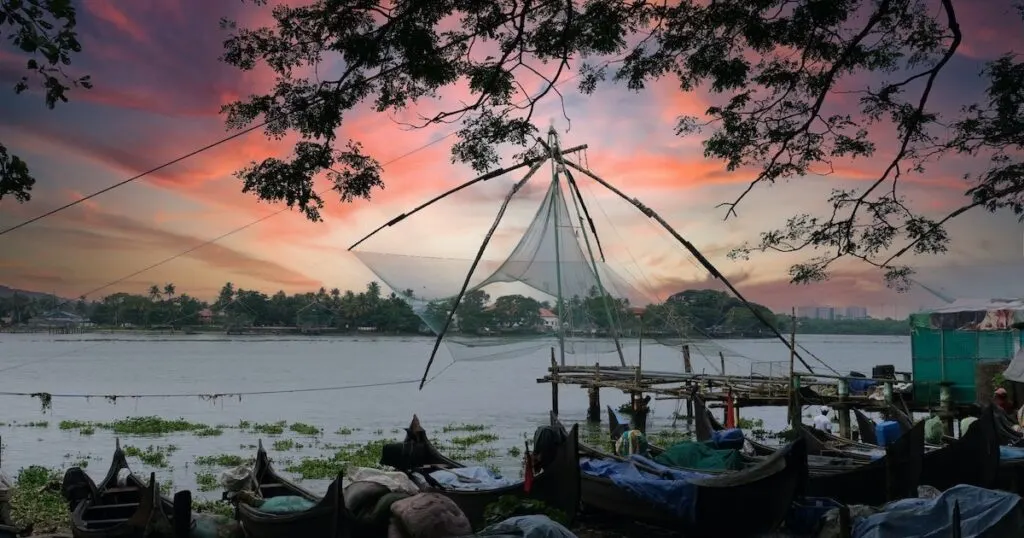
As one of the main cities in Kerala, Kochi is also a good place to experience some of the state’s traditions.
These include Kathakali (a traditional art form in which performers act out tales from the Hindu epics), Sadya (a traditional meal in Kerala) or Ayurvedic treatments from India’s long-standing holistic medicine practice.
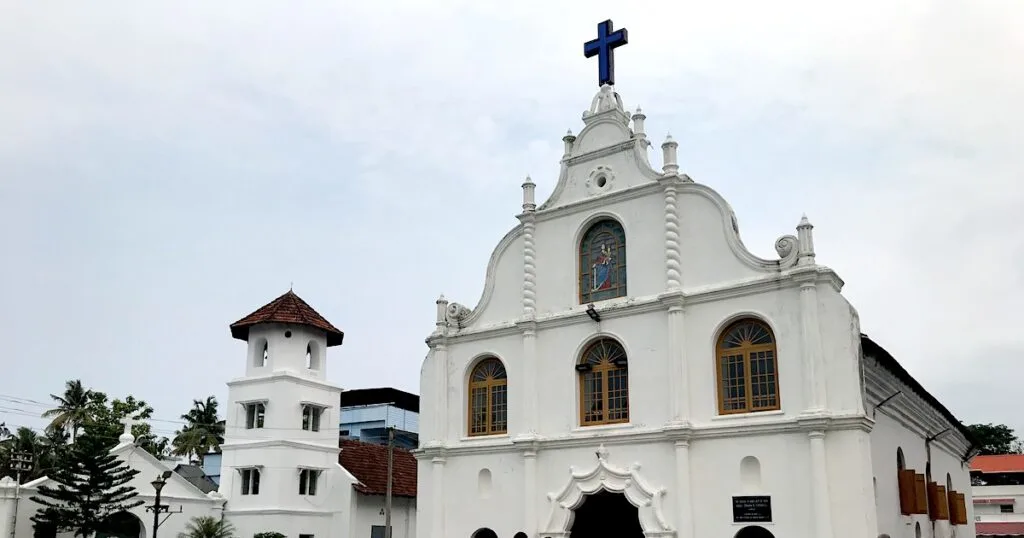
Best of all, though, Kochi is near to Kerala’s famous backwaters, a unique system of canals, rivers and other waterways.
Houseboat cruises and backwater cruises in Alleppey are very popular day trips from Kochi.
To summarise, Kochi is worth visiting for:
- Visiting the iconic Chinese fishing nets
- Dutch, Portuguese and British colonial architecture
- A variety of religious sites, including churches, temples and a synagogue
- Trying local food
- Watching Kerala’s traditional art forms such as Kathakali
- Accessing Kerala’s backwaters
How to Get to Kochi
Kochi has an international airport: Cochin International Airport.
By air, it is well-connected to other cities in India, including destinations in south and north Kerala.
I recommend that you check for flight deals several months in advance using Skyscanner.
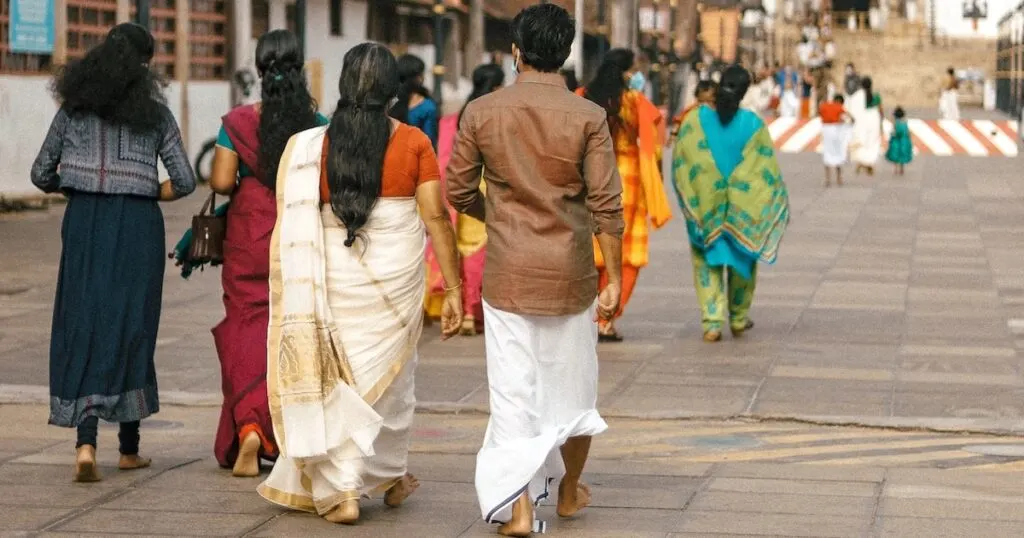
To reach Kochi by land from Alleppey or Munnar, you must rely on public buses or private transfers.
Many day-long or multi-day tours also depart from Kochi, visiting Alleppey, Munnar and Thekkady.
How to book transfers: There are several hotel-to-hotel transfers available on 12Go (e.g. from Munnar to Kochi).
How to book tours: There are day tours on GetYourGuide and multi-day tours on and Viator.
Alternatively, you can ask your hotel/hostel for help you book tours and transfers.
Flights! ✈️
Here’s why I use Skyscanner…
Finding a good deal on flights can often cut the cost of your trip in half. I use the ‘Whole Month‘ and ‘Price Alerts‘ tools to compare prices across different dates.
How to Get Around Kochi
1. Uber
I primarily used Uber to travel around Kochi. Uber was almost always cheaper than bargaining with local taxi drivers. It also felt safe to use as a solo female traveller.
I used a local SIM card to access the internet around the city.
If you don’t have one, I recommend getting an India eSIM to ensure that you always have the option of hailing an Uber, even without Wi-Fi.Airalo has an affordable India eSIM for 7, 15 or 30 days.
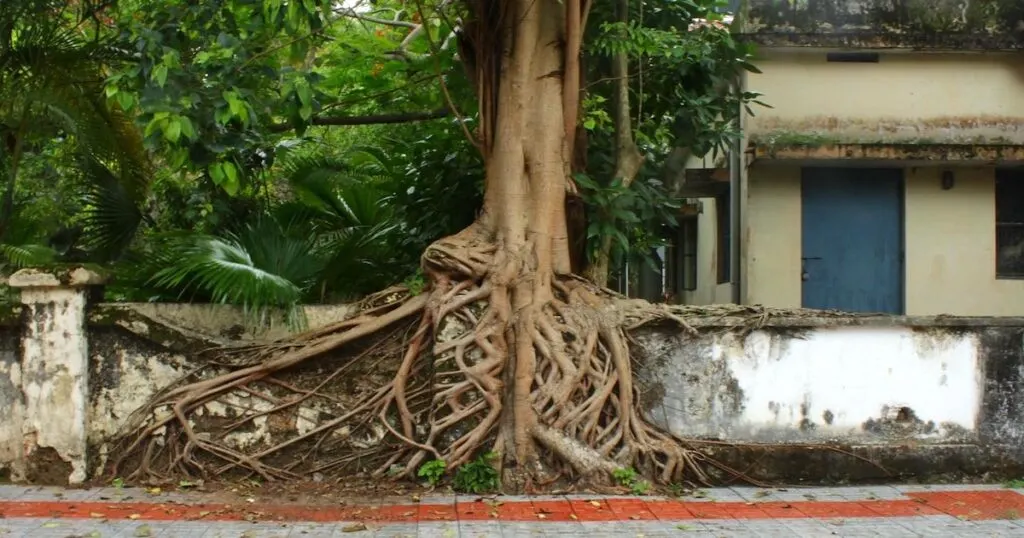
Uber offers car or tuk-tuk taxis in Kerala.
The tuk-tuk taxis are the cheapest type of Uber, although they don’t have room for luggage and move slower than a car.
2. Tours
Tours are another easy way to get around Kochi.
Having a tour guide can take away any anxieties you have about safety, being overcharged or not being able to communicate in the local language.
This Cochin tour by tuk tuk is a nice way to see some of the main attractions in the city with a local English-speaking guide.
It visits spice markets and key churches and colonial buildings in Fort Kochi.
3. Ferry
I also used the ferry system in Kochi. The city is surrounded by sea and backwaters, so taking the ferry can often cut your your journey time in half.
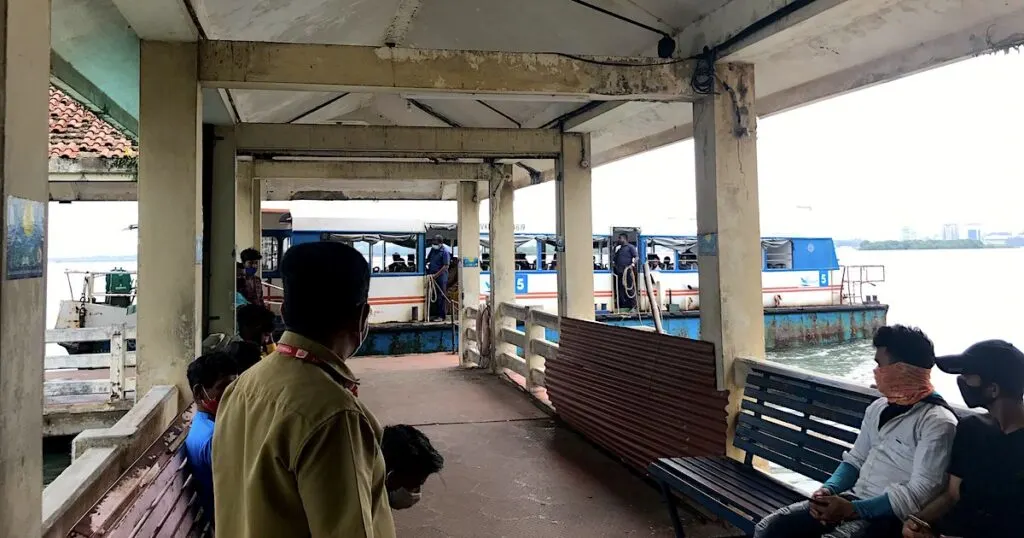
There are multiple jetties around Cochin, but the main ones you need to know are:
- Fort Kochi
- Ernakulam
- Vypin
One the most popular routes is Fort Kochi to Ernakulam. This is one of the routes I took. On the ferry, I spotted a pod of dolphins almost immediately.
The ferry is widely used by locals because the tickets are very affordable.
Where to Stay in Kochi
The best area to stay in Kochi is Fort Kochi, where many of the city’s main tourist attractions are within walking distance.
I stayed at Forte Kochi, a heritage hotel with Dutch architecture based in Fort Kochi. It is less than five minutes’ walk away from the Chinese fishing nets, so it made it very easy to carry out my Fort Kochi itinerary.
The staff were extremely friendly and helpful, pointing me in the direction of good restaurants, the local post office and other locations.
A Short History of Kochi
Kochi (formerly Cochin) has a long, complex history.
For a long time, it was a profitable spice trading city with trading routes to China and Arab and European countries. It traded spices such as pepper, cinnamon, cardamom and cloves.
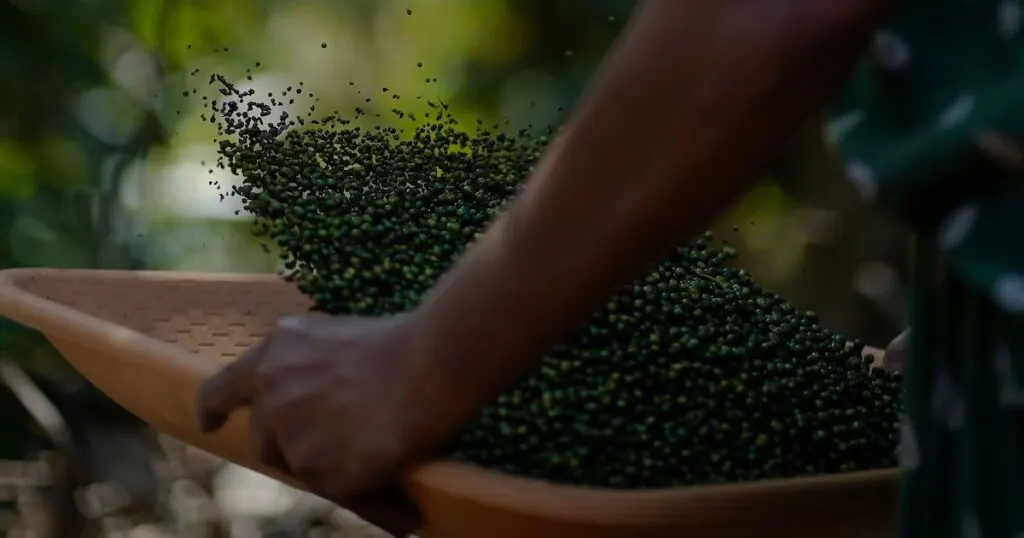
However, in 1503, the Portuguese arrived in Kochi.
They established Fort Kochi (now one of the most popular tourist areas in the city). It was under their control until the Dutch captured the city in 1663.
In total, Kochi endured 160 years of Portuguese occupation and 112 years of Dutch colonial rule.
In 1795, the British defeated the Dutch. They stayed in Kerala until 1947, when India declared independence.
Quick Look: The Best Things to Do in Kochi
In a rush? Here’s a quick overview of some of the best things to do in Kochi, before I get into the finer details…
- Tour Fort Kochi: Chinese fishing nets, street food, St. Francis Church and Santa Cruz Cathedral.
- Visit Kochi’s museums: Mattancherry Palace, the Indian Naval Maritime Museum, the Indo-Portuguese Museum or the Kerala Folklore Museum.
- Watch Kathakali and Kalaripayattu, two of Kerala’s traditional art forms.
- Explore Jew Town‘s spice markets.
- Relax at Cherai, a beach area outside of the city.
- Take a day trip to Alleppey’s backwaters.
- Get an Ayurvedic treatment.
- Take a cooking class!
Kochi Itinerary: The Best Places to Visit in Kochi
1. Fort Kochi
I spent many hours strolling around the busy streets of Fort Kochi, stopping to admire the Chinese fishing nets, the crowds wading in the shallows of the beaches at sunset, and sipping on fresh coconuts.
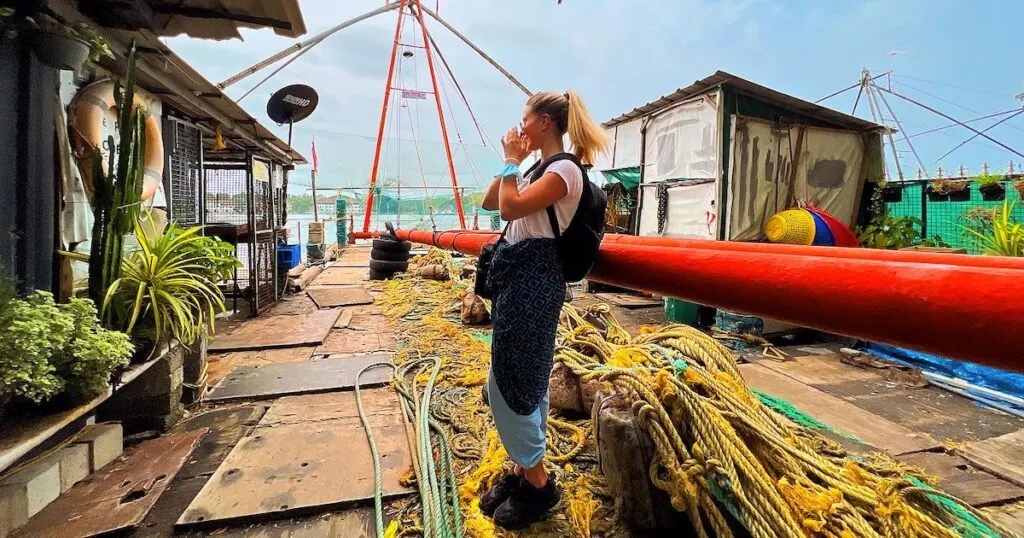
As you walk around Fort Kochi, you will notice the abundance of Dutch, Portuguese and British colonial architecture.
That’s because Fort Kochi was under Portuguese, Dutch and British rule (each one following the other) from 1503 to 1947.
The area also has a series of Chinese fishing nets suspended over the ocean. These large cantilever fishing nets are made from teak or bamboo and rope.
It’s thought that they were introduced by Chinese explorers sometime between 1350 and 1450 AD. They are still in use to this day; they are an integral part of Kochi’s fishing industry.
Fort Kochi Itinerary
I started my Fort Kochi itinerary by visiting the Chinese fishing nets.
They are next to Vasco da Gama Square, a promenade where you can buy fresh coconut and souvenirs. The promenade is also lined with stalls that will cook you fresh fish caught in the Chinese fishing nets.

From there, you can walk down the promenade until you reach Fort Emmanuel, a small 16th-century Portuguese fort with the same cannons that were used to defend Fort Kochi from other colonial powers.
If you have time for a bite to eat, the Pandhal Cafe & Deli, David Hall Art Cafe is a good spot. Set in a 17th-century Dutch bungalow, the venue has been selling Mattancherry spice cakes since 1984. It also has an art gallery with modern local art.
Further south, you can quickly reach Fort Kochi Beach on foot. I loved watching the sunset here, as many locals gather at the beach to wade in the shallows and watch the sun go down.
Enroute is Dutch Cemetery Road, where there are over 100 tombs and epitaphs for historic Dutch and British figures.
The nearby St. Francis Church is one of Fort Kochi’s most famous historic sites. This white church is the oldest church in India, built in 52 AD.
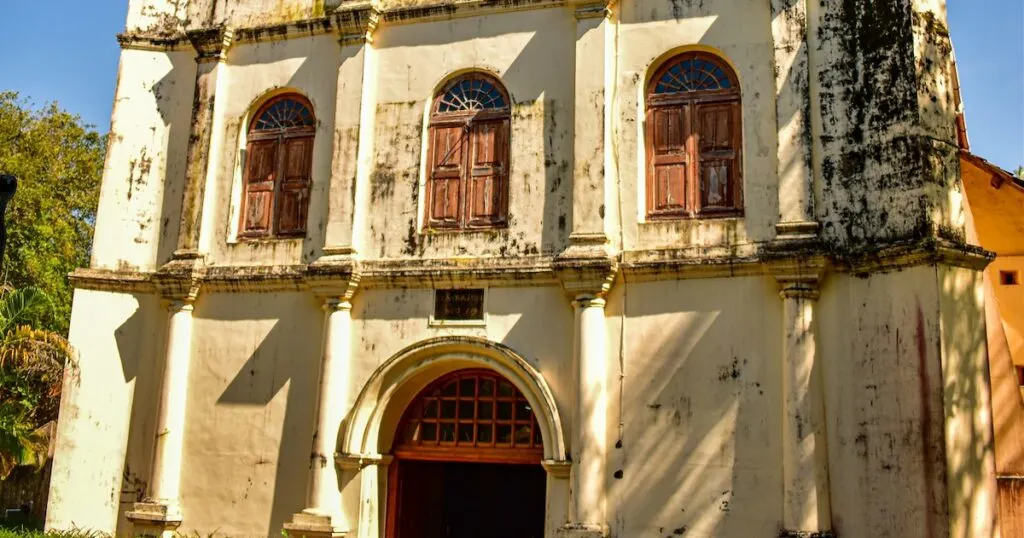
St. Francis Church
Santa Cruz Cathedral is another key church in Fort Kochi. The large, white cathedral was built by the Portuguese.
It’s one of only nine basilicas in Kerala (and one of 34 in the entirety of India). It has Gothic and Indo-European influences.
Fort Kochi is also home to several of Kochi’s best museums…
2. Visit Kochi’s museums
There are handfuls of museums in Kochi. If you’re interested in learning more about the city’s history, they’re an excellent addition to your Kerala itinerary.
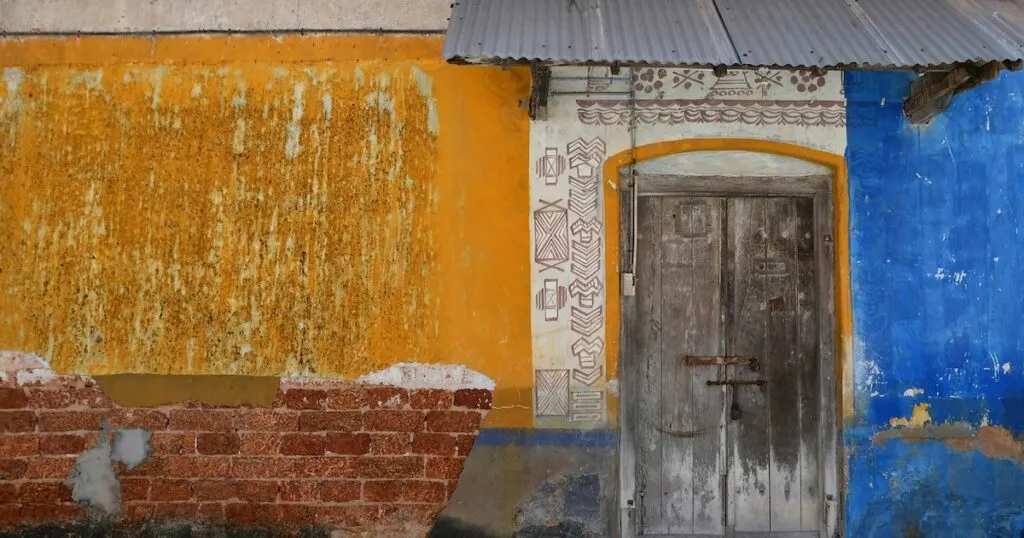
Fort Kochi museums
The Indian Naval Maritime Museum displays models of old war uniforms, warships and artillery devices used in Kochi.
The Indo-Portuguese Museum explores the Portuguese influences in Kochi. It displays the original sketches of Santa Cruz Cathedral and old Portuguese fort remains.
Mattancherry Palace
If you’re going to visit any museum in Kochi, make it Mattancherry Palace. I loved exploring this Dutch palace.
Built by the Portuguese in 1545, it was given to the King of Cochin as a peace offering after they looted a nearby temple.
At the time, relationships with the Portuguese were mixed—some groups in Kerala saw them as potential allies, and others saw them as a threat.
The palace has many colourful murals, including a mural depicting the Ramayana story, and royal antiques. It’s a fascinating place to wander around.
Kerala Folklore Museum
The Kerala Folklore Museum is a museum about traditional Kerala architecture.
It has over 6000 art pieces, including old masks from Indian folk arts, jewellery and oil paintings.
3. Watch Kathakali and Kalaripayattu
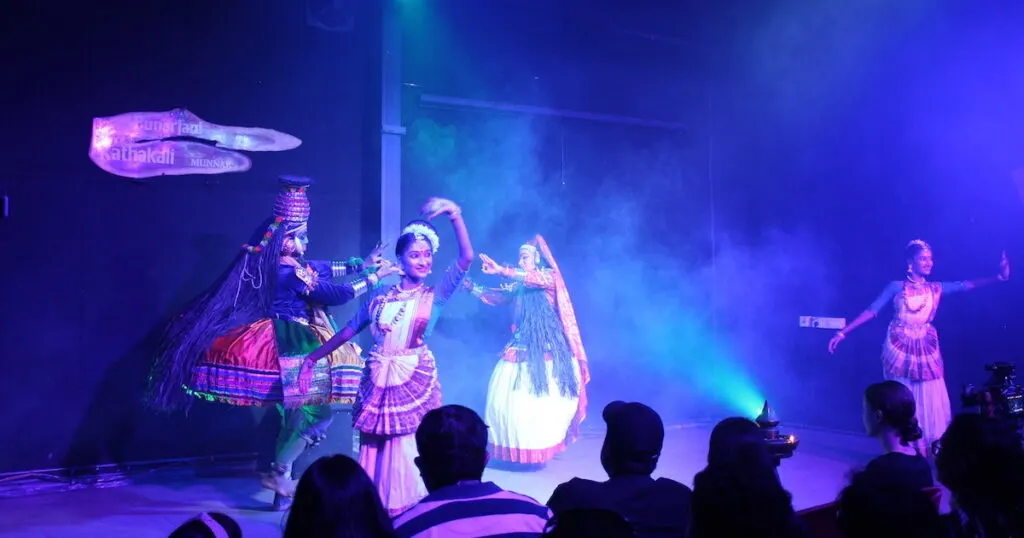
Kathakali is a traditional art form that you must experience on your Kochi itinerary
The art form originated in Kerala, where it was used to pass stories from the Hindu epics from one generation to the next. The performers use a variety of techniques, including dance, mime and eye dancing.
I saw a Kathakali performance in Munnar, but if you want to see Kathakali in Kochi, you can visit the GREAT K V Kathakali centre in Fort Kochi.
This venue has been open since 1990. It also puts on Kalaripayattu performances, a traditional martial arts form that also originated in Kerala.
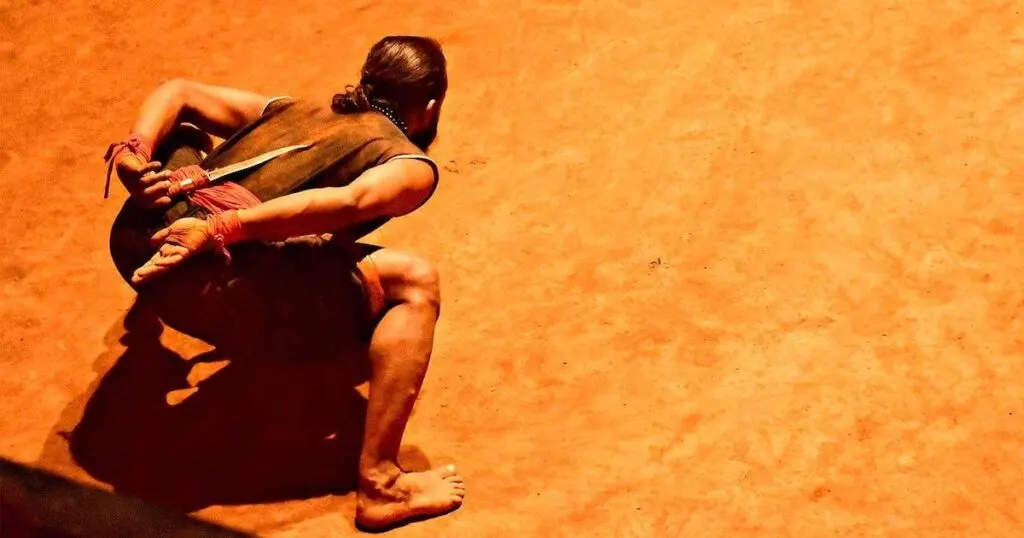
If you want a hands-on experience, the centre also runs a three-hour Kathakali makeup training session where you can see how the performers prepare their face and costumes.
4. Explore Jew Town
Kochi’s Jew Town is another must-visit on your Kochi itinerary.
Located in Mattancherry, Jew Town has a 16th-century synagogue (the Paradesi Synagogue), many heritage buildings and shops selling antiques, spices and crafts.
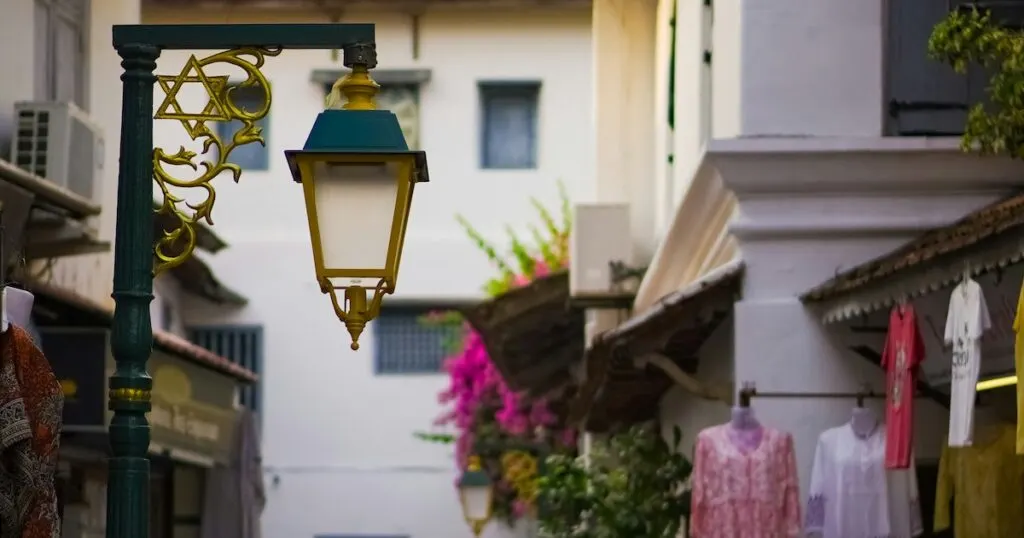
The area was once home to a large Jewish community, the oldest group of Jews in India. However, the modern-day Jewish community is now tiny.
This Jewish heritage tour visits several synagogues, a Jewish cemetery and ends in Fort Kochi with a two-hour tour of the Chinese fishing nets and other heritage sites.
5. Get an Ayurvedic treatment
One of the best things to do in Kochi is to experience Ayurveda, India’s traditional medicine practice.
Kerala is known as the ‘Land of Ayurveda’, so there are no shortages of Ayurveda resorts and spas in Cochin.
Ayurveda is a whole-body science, so the best way to experience it is to stay at a dedicated Ayurveda resort.
If you don’t have time, you can get a one-off treatment such as an Abhyanga massage using herbal oils.
A Shirodhara treatment is very popular too. The herbal oils are applied over the head to improve your sleep and help you relax. I only recommend this if you don’t mind having oily hair for a day or two afterwards.
I visited Fort Ayurveda for my Ayurvedic massage, as it was recommended to me.
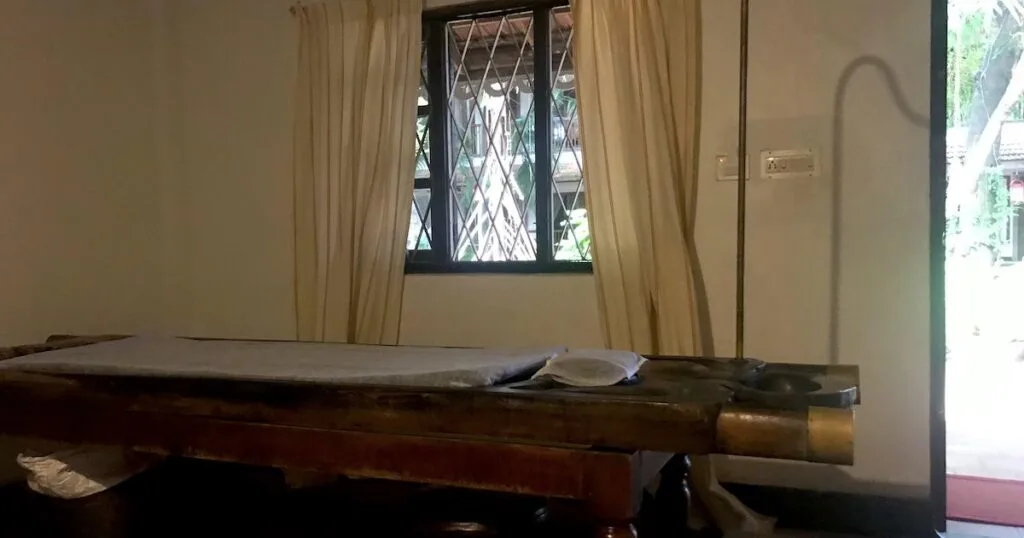
The place is geared towards tourists, with several English-speaking staff. The massage was good, but I would have preferred a more in-depth consultation.
Next time, I would try Ayurveda Sanctum, as it has better reviews.
6. Relax at Cherai Beach
One of my favourite activities on my Kochi itinerary was visiting Cherai Beach, a popular beach area located an hour’s drive north of Kochi.
The sandy beach is lined with food stalls and beach resorts.
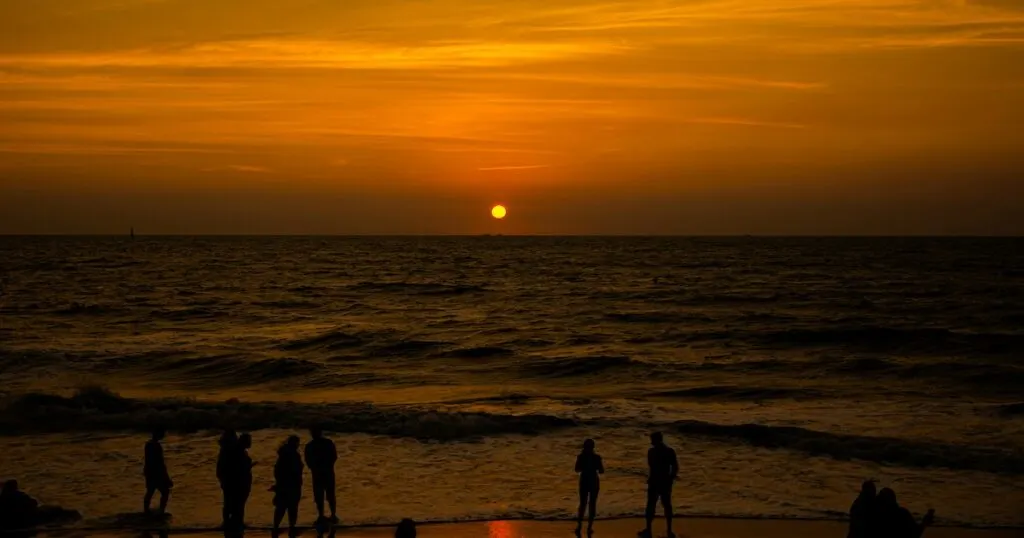
and I went into the water for a swim (although the waves were quite big… I had fun diving under a few gigantic ones).
In Kerala, swimming in the sea isn’t all that popular. Plus, the area is conservative, so I didn’t see anyone wearing a bikini. Most people wade in the shallows fully clothed.
This is a nice spot for a brief dip (wearing longer swimwear) and some time on the sand. It’s also popular (and busy) at sunset.
7. Explore Kochi’s temples
The majority religion in Kochi is Hinduism, so naturally, there are many spectacular temples within the city.
Cochin Thirumala Devaswom Temple (Mattancherry) is dedicated to the deity Venkatachalapathy. It has a copper-plated roof. The architectural style is the Nagara Style (from Hinduism).
Sree Poornathrayeesa Temple (Ernakulam) is the first of eight royal temples built by the Kingdom of Cochin. Dedicated to Vishnu, it hosts several annual festivals.
The most significant is Vrishchikoltsawam, an eight-day festival from November to December, where Kathakali and live music are involved.
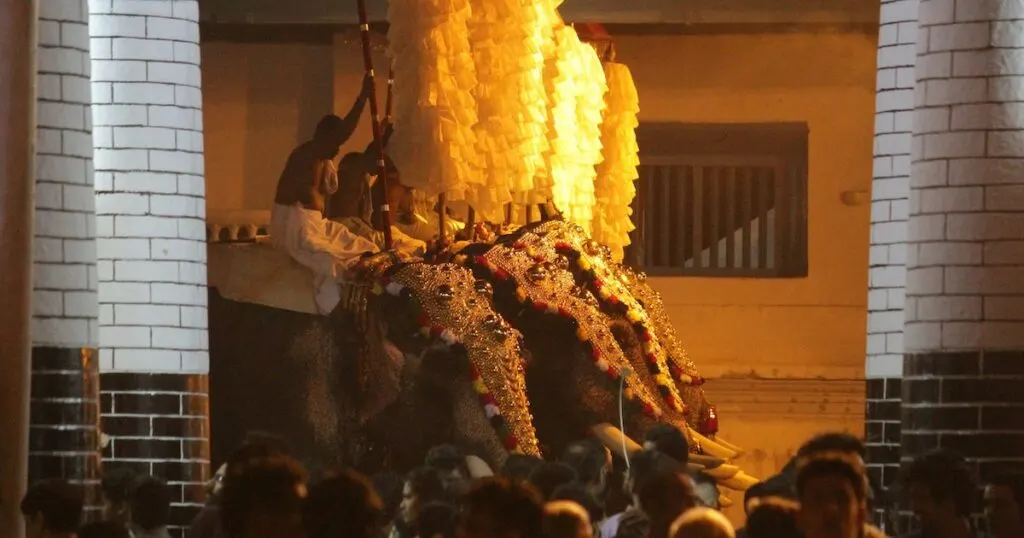
A festival at Sree Poornathrayeesa Temple
Ernakulam Shiva Temple (Ernakulam) is Kochi’s main temple. Dedicated to Lord Shiva, it is one of seven former royal temples in Kochi.
8. Take a day trip to Alleppey’s backwaters
Kochi is only an hour and a half’s drive from Alleppey (Alappuzha), otherwise known as the ‘Venice of the East’.
If you aren’t due to visit Alleppey next on your Kerala itinerary, then I would jump at the chance to take a day trip there.
Alleppey has a huge system of backwaters, including rivers, lagoons and canals. They are home to many of Kerala’s 450+ bird species.
The most famous thing to do in Alleppey is a houseboat cruise.
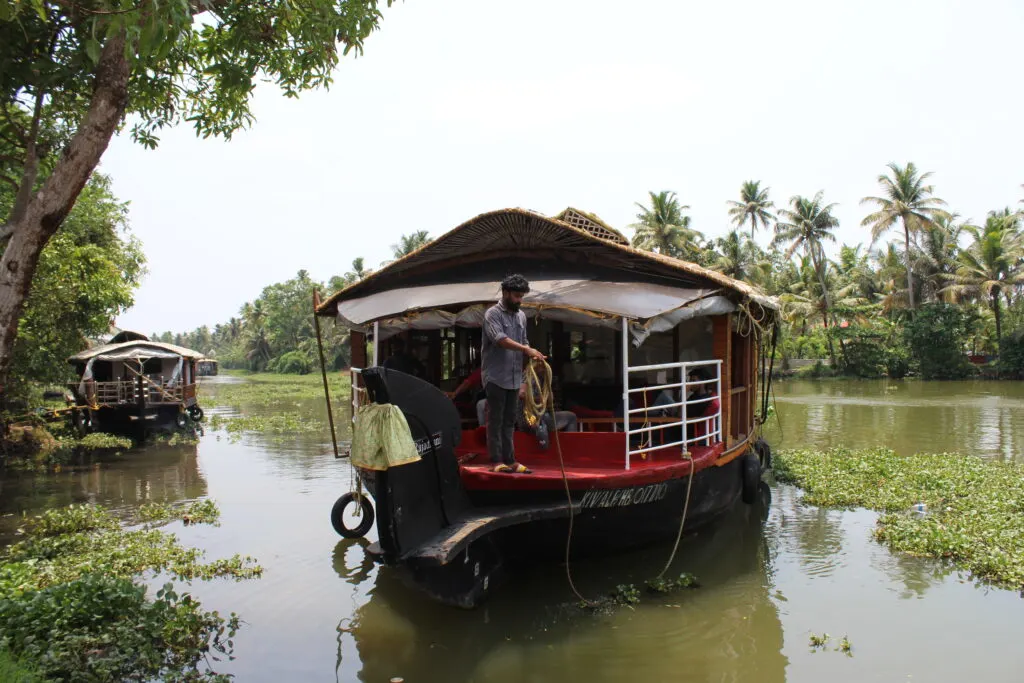
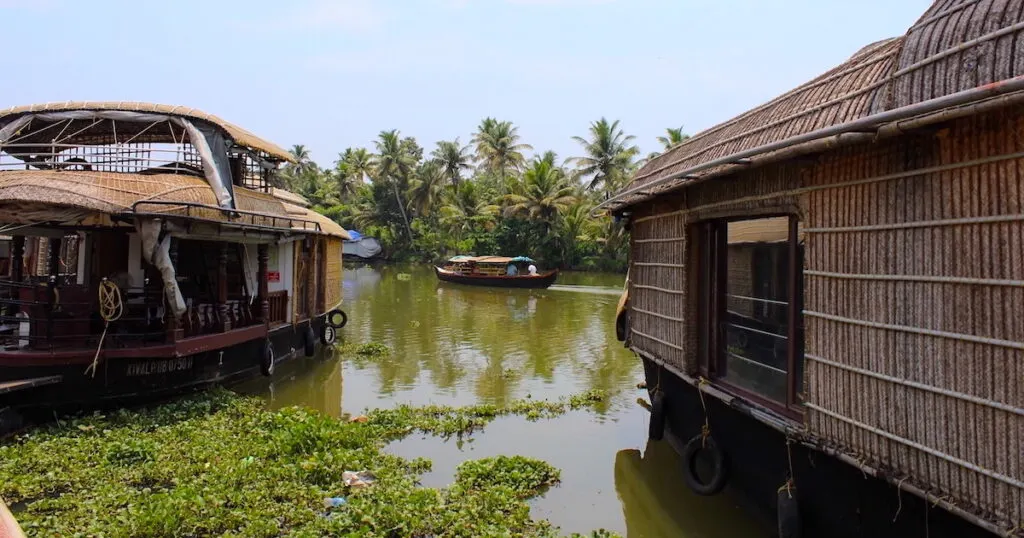
In Kerala, houseboats are modelled upon the Kettuvallam, a traditional boat used to transport rice and spices across the state.
The houseboat rendition is a kind of ‘liveaboard’ where you can stay overnight in a hotel room on the boat.
Coincidentally, dusk and dawn are the best times for birdwatching and wildlife watching, another reason why houseboat cruises are so popular.
If you don’t want to stay overnight, you can simply take a standard backwaters boat tour from Alleppey.
These use Shikara boats, smaller wooden boats that have been used for centuries by fishermen transporting smaller loads.

Shikara boat approaching in Alleppey
Houseboat and shikara day tours can be booked at your accommodation in Kochi. However, they are extremely popular.
If you’re travelling in high season, it’s better to secure your tour online rather than leaving things to the last minute.
This houseboat cruise includes pick-up and drop-off in Kochi. Not taking a houseboat? You can try this Shikara backwater cruise instead.
If you are visiting Alleppey next, it’s better to book directly onto a houseboat for one or more nights (as I explain in my Alleppey itinerary)…
9. Take a cooking class
Whenever someone asks my favourite destination for food, Kerala is my answer. The food uses lots of coconut, seafood, rice and spices like turmeric, green chillies and garam masala.
Seafood is a huge part of cuisine because of its backwaters and proximity to the Arabian Sea.
Coconut and green chillies are widely available in Kerala too, which means that the coconut-based curries are less spicy than the curries in the north of India (where they use red chillies and less coconut).
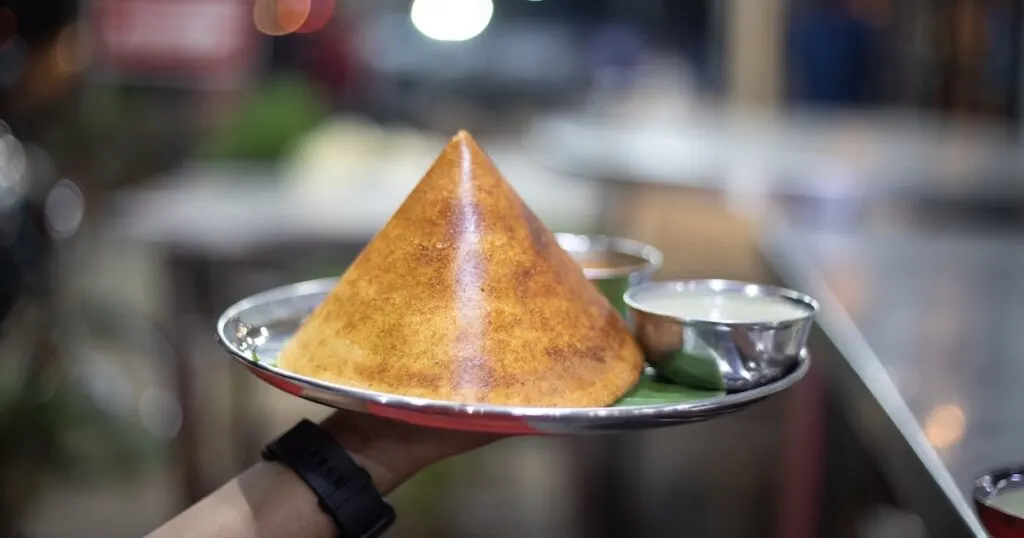
Thosai (rice pancake) in Kerala
As someone who can’t eat gluten, I also loved the fact that it was so easy to find dishes with rice or savoury rice pancakes.
The best way to take these recipes back home is to learn the method in a cooking class.
There are plenty of cooking schools in Kochi: Maria’s South Indian Cooking Class is a good option for your Kochi itinerary.
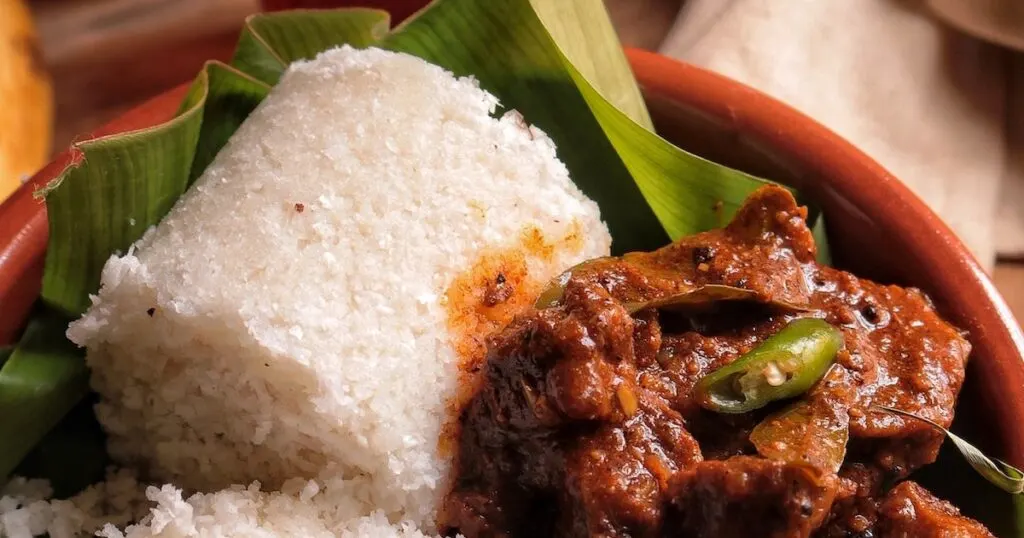
Puttu
If you want to book your cooking class in advance online, this three-course Kochi cooking class visits a local home.
They teach you to make dishes such as porotta, beef roast, idiyappam and kadala curry using traditional cooking tools.
10. Tour the city’s spice markets
The spice trade is an integral part of Kochi’s history as a port city. Kerala produces masses of rich, aromatic spices, and they are all for sale at the city’s spice markets, where you can browse and smell them to your heart’s content (or buy some to take home).

There are several small shops in Fort Kochi (Ns Spices and Spice Corner) if you’re limited on time.
However, the best place to go spice shopping for tourists is along Jew Town Road in Jew Town, where there are 10+ spice shops.
If you’re keen to bargain at a more local spot, visit one of the city’s bazaars instead: Broadway MetharBazar in Ernakulam is a good choice.
I hope you found my Kochi itinerary useful!
If you’re looking for more tips and suggestions for your Kerala trip, then continue reading my Kerala series…
- Kerala itinerary – start here!
- Alleppey itinerary – just an hour’s drive from the city
- Munnar itinerary: tea plantations, treks and more
- Steal my Thekkady itinerary (wildlife watching galore!)
- What to wear in Kerala + free packing list

